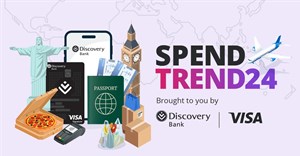Trending
Elections 2024
Jobs
- Store Manager Mossel Bay
- Store Manager Knysna
- Ratail Sales Consultant White River
- Sales Rep/Traders Assistant Hazyview
- Sales Person Hazyview
- Direct Sales Person Nelspruit
- Collection Agent Barbarton
- Customer Development Executive Hazyview
- Inside Sales Representative Hazyview
- Creative Strategist Hazyview
Top trends for loyalty programmes in 2022

The pandemic has forced organisations to rethink their relationships with customers with traditional tactics no longer sufficient. This has resulted in several interesting trends to watch over the coming months.
“If ever there was a time for loyalty to prove its worth, then it is now. More than ever, brands must remain engaged with their customers to cultivate deeper relationships that reflect the uncertainties of the current environment. A cornerstone of this is for loyalty to evolve and bridge the gap between the digital and physical worlds more effectively. With this comes the need to relate to a brand on an emotional level instead of a purely commerce-driven one,” says Nic Roets, International consultant at customer loyalty specialists, LoyaltyPlus.
Shifting customer expectations
Catering for the notions of customer demands and expectations has always been challenging, this has become more pronounced over the past two years. Customers expect brands to provide value while still being affordable. A careful balancing act is required between delivering benefits relatable to the new normal, while still providing the brand opportunity to reach its revenue targets.
“Of course, this does not mean that the loyalty programme should throw out the tactical interventions that were successful in the past. It is about enhancing them with tweaked offerings that better cater for a world that sees social distancing, online shopping, and a more value-conscious consumer dominating,” says Roets.
Being authentic
One of the biggest mistakes any brand can make is to lose its authenticity in the pursuit to drive growth. Consumers want to interact with companies that share similar values. Products must reinforce the lifestyle of the target audience while continually maintaining the relationship between brand and customer.
“This is where two-way communication becomes critical. Brands must ask their customers what they want, how they want it, and when they want it. Being authentic is all about listening to the consumer market and responding to that with relevant products as opposed to forcing something that simply does not fit into the belief system of the customer,” adds Roets.
NFT potential
There will be an increasing awareness of the potential of non-fungible tokens (NFTs) in the customer loyalty space. Oversimplifying the concept, an NFT can be viewed as a unique digital trading card. Think of a painting, a piece of music, a cartoon, a piece of digital property – any of these can constitute being an NFT.
Artists have already created NFTs that are fetching high prices in the global market. At a fundamental level, an NFT gives you the ownership of that work of art, music, and so on. Remaining with art as an example, you can own the original ‘painting’ while copies can be available.
Even though it is still early days for NFTs in South Africa, there are signs that the niche audience is adopting it to buy into the trend before it becomes mainstream. Brands can experiment with different kind of NFT offerings for these early adopters and build loyalty with a potentially lucrative customer base.
These are just the tip of the iceberg when it comes to things that have the potential to positively disrupt the loyalty programme environment. It really is a brand new world of opportunities out there. Companies need to be ready to embrace it through a more rewarding and unique loyalty programme.



















